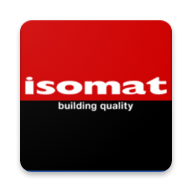Repairing of damaged concrete (surface damage, blisters, broken corners etc.)
RELATED MATERIALS
MEGACRET-40 High-strength, fiber-reinforced repairing mortar
DUROCRET Polymer-modified cement mortar
RAPICRET Fast-setting patching mortar
PLANFIX Polymer-modified cement putty
PLANFIX-FINE Polymer-modified cement putty, extra fine-grained
I. NATURE OF THE PROBLEM – REQUIREMENTS
Damages at the surface of concrete may be caused by various reasons, such as bad concreting (insufficient vibration etc.) or blows etc.
This damages:
Creat problems to the element’s appearance.
Depending on the extent and level of damage, may even put the stability of the structuralelement at risk.
Creat conditions for corrosion of the steel reinforcement.
II. SOLUTION
In order to choose the appropriate material for repairing damage, the following cases should be taken under consideration:
Damage to supporting structural elements
For the repairing of damaged concrete in supporting structural elements, MEGACRET-40 high-performance patching mortar is used, providing the following:
Excellent bonding to the substrate.
Superior workability.
Reduced water permeability.
No shrinkage during setting.
Alternatively, if fast work is required, RAPICRET fast-setting patching mortar may be used instead.
Damage to non-supporting structural elements
For repairing of damages to non-supporting structural elements, besides the above mortars, DUROCRET polymer modified cement mortar may be used.
Small superficial damage to supporting and non-supporting structural elements
In case of smaller superficial damages that require the application of a thin layer of material for their repair, the use of PLANFIX or PLANFIX-FINE polymer-modified cement putty is recommended.
III. APPLICATION
Substrate preparation
All broken and loose particles of the damaged section of the concrete surface must be removed.
The uncovered undamaged concrete should be roughened and cleaned from dust etc.
Subsequently, the substrate must be well dampened, but without forming pondings.
The application of the appropriate patching mortar for each case follows.
Application of MEGACRET-40
The content of a 25 kg bag of MEGACRET-40 is added into 4,6 lit of water and mixed well until a uniform firm mass appropriate for repair work is formed. The material should be applied (pressed) with a trowel or by gunning, at the desired thickness, up to 4 cm per layer. When a second layer is required, the surface of the first layer should be roughened to achieve better adhesion. The final surface should be well protected from dehydration by covering it with wet cloths, polyethylene sheets or repeating dampening for 48 hours.
Consumption of MEGACRET-40: approx. 17,5 kg/m2/cm of layer thickness.
Application of RAPICRET
RAPICRET is added to the water in the proportion of RAPICRET : water = 3.6 : 1 parts by volume, and mixed well until a uniform firm mass appropriate for repair work is formed. Mixing time must not exceed 1 minute. Mixing of small quantities each time is recommended, due to the short working time of the material. (approx. 15 minutes at +200C). RAPICRET may be applied at a thickness of up to 3 cm per layer.
Consumption of RAPICRET: approx. 17,5 kg/m2/cm of layer thickness.
Application of DUROCRET
The content of a 25 kg bag of DUROCRET is added to 4.6 kg of water under continuous stirring, until the desired workability is achieved. The material is applied by trowel as usual. DUROCRET may be applied at a thickness of up to 2 cm per layer.
Consumption of DUROCRET: approx. 15 kg/m2/cm of layer thickness.
Application of PLANFIX or PLANFIX-FINE
Water is poured into a clean container, and PLANFIX or PLANFIX-FINE is gradually added under continuous stirring, in a ratio of PLANFIX (or PLANFIX-FINE) : water = 3 : 1 parts by volume, until a uniform pasty mass that can be applied with a smooth trowel is formed.
Consumption of PLANFIX and PLANFIX-FINE: approx. 1,3 kg/m2/mm of layer thickness.
IV. REMARKS
Temperature during application should be between +5oC and +35oC.
Material that has started to set should not be re-softened with water.
At high temperatures, mixing RAPICRET with cold water is recommended, in order to avoid excessively fast setting.
At low temperatures, mixing RAPICRET with lukewarm water is recommended, in order to accelerate the setting process.
During summer time, it is recommended that all mortars are dampened after their application, in order to be protected from dehydration due to high temperatures.
The products contain cement, which reacts as alkaline with water and is classified as irritant.
Before use, consult the safety advice and precautions written on the packaging.






